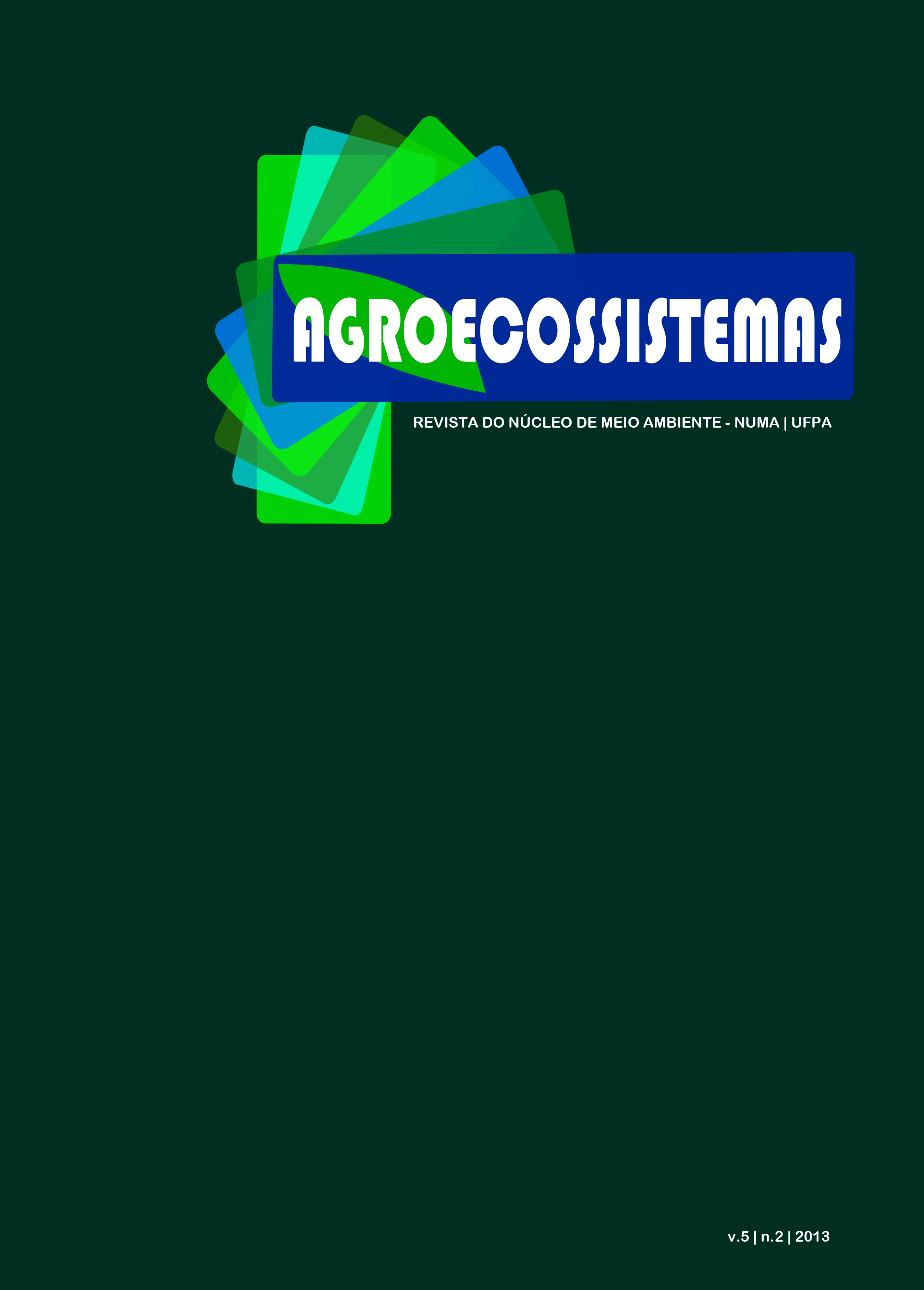DRY MASSES AND LEAF ÁREA PRODUCTION OF YOUNG AÇAÍ PALM SUBMITTED TO WATER DEFICITS
DOI:
https://doi.org/10.18542/ragros.v5i2.1794Abstract
The present work had as objective to evaluate the production of dry mass and the leaf area in the young plants to açai palm (Euterpe oleracea Mart.) with relationship to the readiness of the water in the soil, especially in the production cuttings phase. The experiment was driven in conditions of greenhouse in Embrapa Amazônia Oriental, in Belém, Pará. Açai palm cuttings cultivated in vases of plastic with capacity for 10 kg of substratum. After the transplanted, whole the plants were irrigated daily, being looked for to maintain the humidity of the close soil a field capacity. The imposition of the treatments happened when the plants came with six months of age. The following treatments were used: a) control e b) stressed. They were appraised the following parameters: a) leaf area and b) weights of dry masses of leaves, leaflets, petioles, rachs, sheaths, shoot apex and system root. The experiment was carried out in random way, with three replications. The results obtained in that work, with young plants of açai palm submitted the cycles of water deficits of different intensities evidenced that, the productions of dry masses of system root, leaves, leaflets, rach, petioles and sheats were significantly reduced. KEYWORDS: Euterpe oleracea, growth and water stress.Downloads
Published
2014-07-20
Issue
Section
Artigos Científicos


